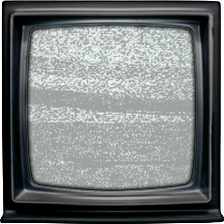Install Steam
login
|
language
简体中文 (Simplified Chinese)
繁體中文 (Traditional Chinese)
日本語 (Japanese)
한국어 (Korean)
ไทย (Thai)
Български (Bulgarian)
Čeština (Czech)
Dansk (Danish)
Deutsch (German)
Español - España (Spanish - Spain)
Español - Latinoamérica (Spanish - Latin America)
Ελληνικά (Greek)
Français (French)
Italiano (Italian)
Bahasa Indonesia (Indonesian)
Magyar (Hungarian)
Nederlands (Dutch)
Norsk (Norwegian)
Polski (Polish)
Português (Portuguese - Portugal)
Português - Brasil (Portuguese - Brazil)
Română (Romanian)
Русский (Russian)
Suomi (Finnish)
Svenska (Swedish)
Türkçe (Turkish)
Tiếng Việt (Vietnamese)
Українська (Ukrainian)
Report a translation problem


 New Zealand
New Zealand 





░░░░░▐▀█▀▌░░░░▀█▄░░░
░░░░░▐█▄█▌░░░░░░▀█▄░░
░░░░░░▀▄▀░░░▄▄▄▄▄▀▀░░
░░░░▄▄▄██▀▀▀▀░░░░░░░
░░░█▀▄▄▄█░▀▀░░
░░░▌░▄▄▄▐▌▀▀▀░░ THIS IS BOB
▄░▐░░░▄▄░█░▀▀ ░░
▀█▌░░░▄░▀█▀░▀ ░░ COPY AND PASTE HIM,
░░░░░░░▄▄▐▌▄▄░░░ SO, HE CAN TAKE
░░░░░░░▀███▀█░▄░░ OVER PEOPLES STEAM ACCOUNTS
░░░░░░▐▌▀▄▀▄▀▐▄░░
░░░░░░▐▀░░░░░░▐▌░░
░░░░░░█░░░░░░░░█░░░
░░░░░▐▌░░░░░░░░░█ BOB WILL TAKE OVER THE WORLD
The potato is a starchy, tuberous crop from the perennial nightshade Solanum tuberosum. Potato may be applied to both the plant and the edible tuber.[2] Potatoes have become a staple food in many parts of the world and an integral part of much of the world's food supply. Potatoes are the world's fourth-largest food crop, following maize (corn), wheat, and rice.[3] Tubers produce glycoalkaloids in small amounts. If green sections (sprouts and skins) of the plant are exposed to light the tuber can produce a high enough concentration of glycoalkaloids to affect human health.
In the Andes, where the species is indigenous, some other closely related species are cultivated. Potatoes were introduced to Europe in the second half of the 16th century by the Spanish. Wild potato species can be found throughout the Americas from the United States to southern Chile.[6] The potato was originally believed to have been domesticated independently in multiple locations,
Cattle are commonly raised as livestock; for meat (beef or veal, see beef cattle), for milk (see dairy cattle), and for hides, which are used to make leather. They are used as riding animals and draft animals (oxen or bullocks that pull carts, plows and other implements). Another product of cattle is dung, which can be used to create manure or fuel. In some regions, such as parts of India, cattle have significant religious meaning. Cattle, mostly small breeds such as the miniature zebu, are kept as pets.
Around 10,500 years ago, cattle were domesticated from as few as 80 progenitors in southeast Turkey.[1] According to an estimate from 2011, there are 1.4 billion cattle in the world.